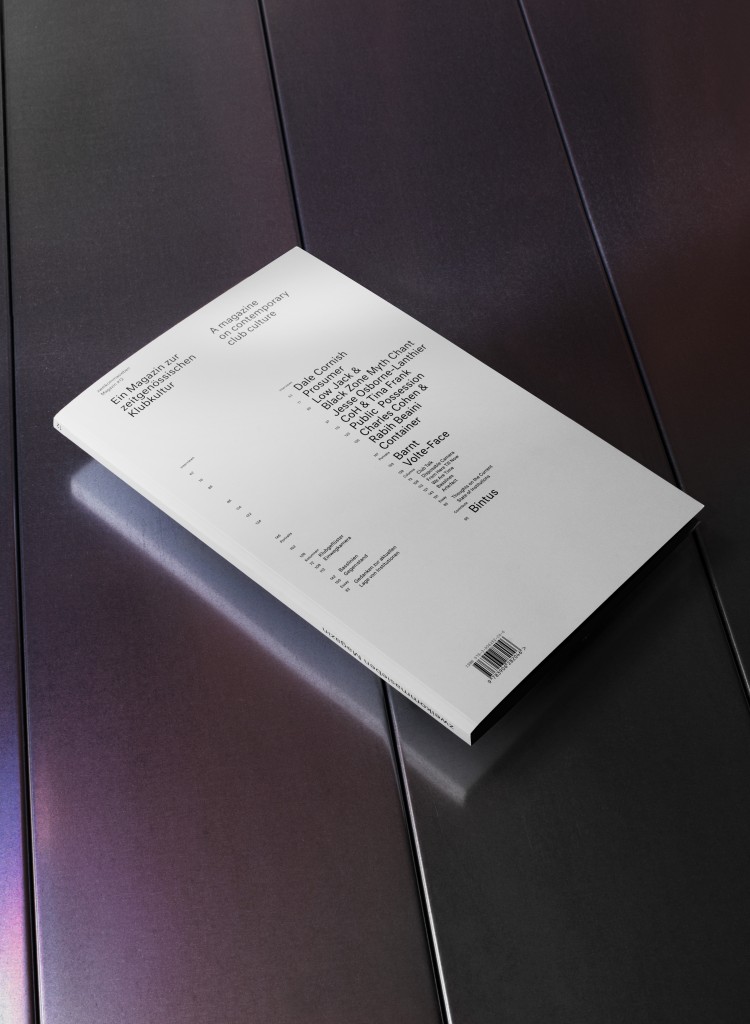zweikommasieben
Magazin #12
As DJs, promoters, musicians, hosts, etc., what can we expect from a given event? This question has been on our minds for a while now. If a flyer advertises an act (x), can one as a guest expect to hear a specific type of neatly-packaged music (y) over a period of z minutes? Or can artist a, booked by promoter b at random club c, hope for either any or all of the conditions (sound, setup, running order, etc.) best-suited to her work? In a sense, yes, because there’s an implicit pact between the different parties involved. This is also the crux of the issue, though: the agreement between the different participants is inherent, but the ideas or visions possessed by those participants are often incongruous (especially since boundaries within genres and other categories have seemed to become more fluid, or even vaporous). As a result, expectations often go unmet and people are disappointed.
This edition is in large part dedicated to these and related considerations. In one example, Container describes the inability of many club visitors to distinguish between live- and DJ-sets. The interviews with Public Possession or Prosumer both address the artist/service-provider dichotomy. Meanwhile, Charles Cohen explains why Duke Ellington’s first tour to Japan garnered such rave reviews from the public. And Low Jack and Black Zone Myth Chant, as well as Barnt, mention surprising—even sobering—audience sizes.
With material by/on/with:
Dale Cornish
Prosumer
Low Jack & Black Zone Myth Chant
Jesse Osborne-Lanthier
CoH & Tina Frank
Public Possession
Charles Cohen & Rabih Beaini
Container
Barnt
Volte-Face
DJ Overdose
Bintus
etc. etc. etc.
